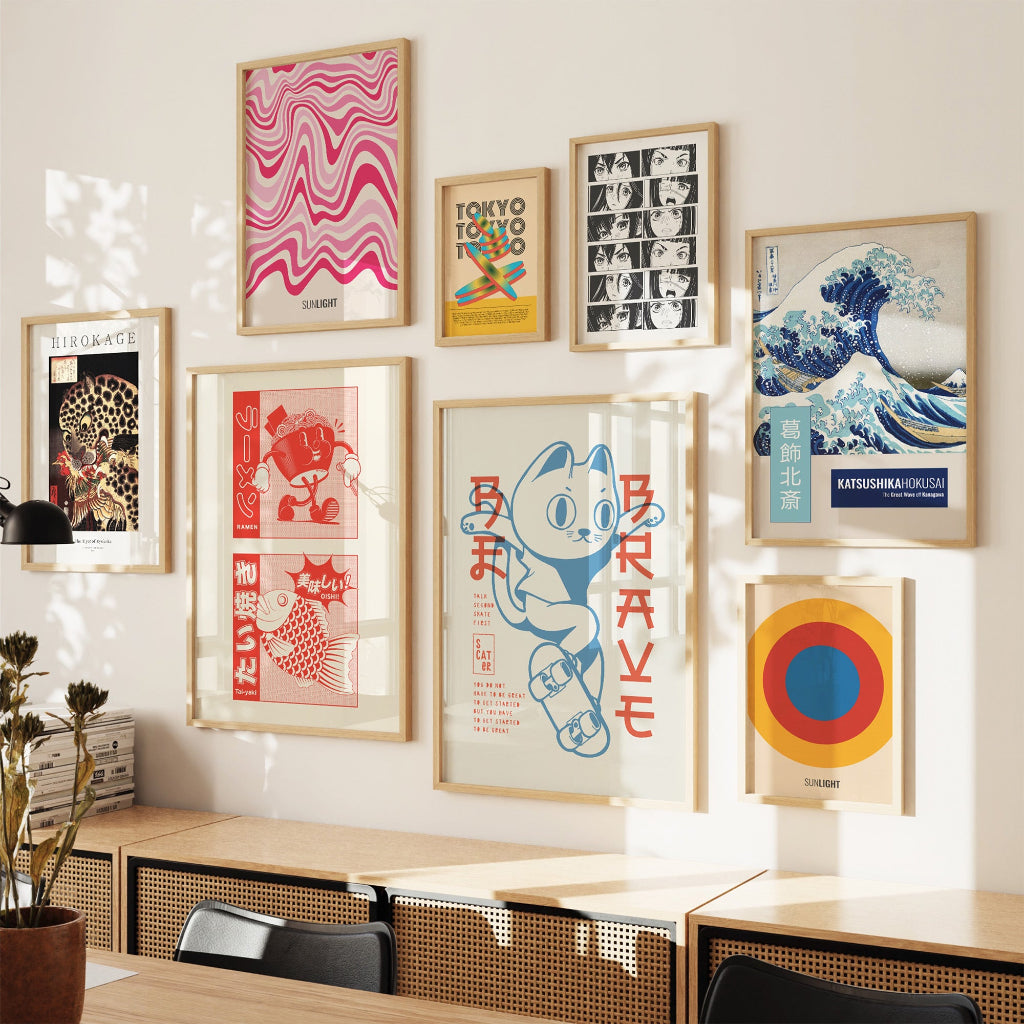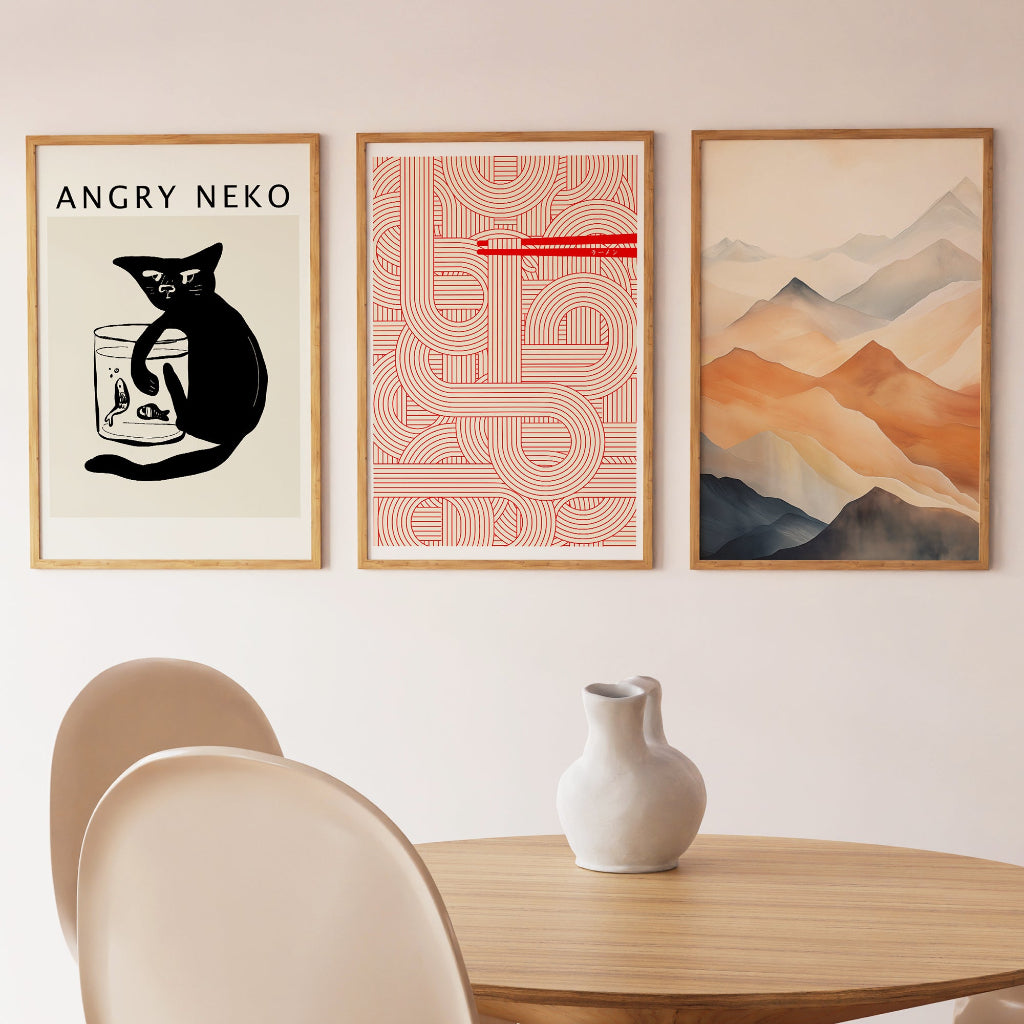
Woodblock print portrait of Utagawa Kunisada, at the age of 80 years - by his principal student, Kunisada II - 1865
Utagawa Kunisada (1786–1865), also widely known as Toyokuni III, was one of the most commercially successful, prolific, and influential Ukiyo-e woodblock print artists of 19th-century Japan.
Born in Edo (now Tokyo), he joined the prestigious Utagawa school as a young apprentice under Utagawa Toyokuni I, from whom he later inherited the 'Toyokuni' name. Kunisada's career spanned over half a century, during which he produced an enormous number of prints, estimated to be well over 20,000 designs.
He was a master of several Ukiyo-e genres, but he particularly excelled in yakusha-e (prints of Kabuki actors) and bijin-ga (pictures of beautiful women). His actor prints were highly sought after, capturing the likenesses, dramatic poses, and elaborate costumes of popular Kabuki stars. He had an exceptional ability to convey the personality and emotional intensity of the actors in their signature roles. His bijin-ga depicted contemporary women, showcasing the latest fashions in kimono, hairstyles, and accessories. These prints often reflected the . . . Read More >>

Woodblock print portrait of Utagawa Kunisada, at the age of 80 years - by his principal student, Kunisada II - 1865
Utagawa Kunisada (1786–1865), also widely known as Toyokuni III, was one of the most commercially successful, prolific, and influential Ukiyo-e woodblock print artists of 19th-century Japan.
Born in Edo (now Tokyo), he joined the prestigious Utagawa school as a young apprentice under Utagawa Toyokuni I, from whom he later inherited the 'Toyokuni' name. Kunisada's career spanned over half a century, during which he produced an enormous number of prints, estimated to be well over 20,000 designs.
He was a master of several Ukiyo-e genres, but he particularly excelled in yakusha-e (prints of Kabuki actors) and bijin-ga (pictures of beautiful women). His actor prints were highly sought after, capturing the likenesses, dramatic poses, and elaborate costumes of popular Kabuki stars. He had an exceptional ability to convey the personality and emotional intensity of the actors in their signature roles. His bijin-ga depicted contemporary women, showcasing the latest fashions in kimono, hairstyles, and accessories. These prints often reflected the aesthetics and tastes of the urban populace of Edo. Kunisada also produced shunga (erotic art), historical scenes, illustrations for books, and prints of sumo wrestlers.
His style evolved throughout his long career. Early works show the clear influence of his teacher Toyokuni I, but he soon developed his own distinctive approach, characterized by bold lines, vibrant colors (especially the newly available imported aniline dyes in his later period, which resulted in striking purples and reds), and expressive figures.
He was a contemporary of other major Ukiyo-e artists like Utagawa Hiroshige and Utagawa Kuniyoshi. While Hiroshige dominated landscape art and Kuniyoshi was renowned for warrior prints and fantastical scenes, Kunisada was the undisputed king of actor and popular bijin prints. There was some rivalry, particularly with Kuniyoshi, but also collaboration, such as the series 'Fifty-three Pairings for the Tōkaidō Road', where Hiroshige designed the landscapes and Kunisada the figures. Kunisada had a vast workshop with many students, including Utagawa Kunichika, who continued the tradition of actor prints.
While some later critics in the early 20th century dismissed his work as overly commercial or decadent compared to earlier Ukiyo-e masters, his immense popularity during his lifetime attests to his skill in catering to public demand and capturing the spirit of his age. In recent decades, there has been a re-evaluation of Kunisada's work, with greater appreciation for his technical skill, his contribution to Kabuki culture, and his role as a chronicler of 19th-century Edo life. His prints offer a rich visual tapestry of the popular culture of his time.
If you want to know more about the artist: Kunisada - Wikipedia
<< Read Less










